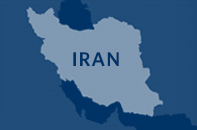Keeping Up with the Cabinet: Commonsense Rules for Safe and Responsible Energy Development
This was originally posted of the Department of Interior's blog. You can read the original post here.

As Secretary of the Interior, I am fortunate to oversee American treasures like the Grand Canyon, the Statue of Liberty, and the Everglades. These are places owned by each and every American.
They are central to our national character, and it is an honor to support their long-term stewardship for the benefit of all.
As manager of 700 million acres of public subsurface estate and our offshore outer continental shelf resources, it is also my responsibility to oversee a significant portion of American energy production, including oil and natural gas, coal, and renewable resources. Just as much as any national park, these resources belong to each and every American. Their responsible development helps drive our economy and our way of life, and it is my duty to ensure that as they are developed, it is done in a balanced and thoughtful way for the public good.
This is no small task. Last year, lands under the stewardship of the Interior Department produced over 200 million barrels of oil and close to 3 trillion cubic feet of natural gas. There are currently over 100,000 wells on federally managed lands across the country, with close to 3,000 new wells drilled each year. Of wells currently being drilled, over 90 percent use hydraulic fracturing.
As it happens, I have some experience in this business. As a young petroleum engineer, I personally fracked wells in the Oklahoma oil patch. Later in my career, I managed oilfield investments for a regional bank, analyzing risk based on resource and market assessments. So I understand both the risks of development and the potential rewards, if it is done responsibly.
Unfortunately, many of the regulations on the books at the Interior Department have not kept pace with advances in technology and modern drilling methods. Many are the same ones from when I was working on drilling and fracking operations in Oklahoma over 30 years ago. Our decades-old regulations do not contemplate current techniques in which hydraulic fracturing is increasingly complex and is coupled with relatively new horizontal drilling technology in larger-scale operations that reach greater depths.
We need to put in place standards that encourage innovation, that help define the rules of the road for the industry, and that help protect communities.
We need to modernize our regulations to make sure they can keep up with evolving technologies.
That is why today the Interior Department is releasing a final rule to update and strengthen regulations governing hydraulic fracturing on public and American Indian lands. The rule is informed by an enormous amount of public input from a transparent, four-year process. It is based on the best advice of experts and engineers as well as community, state and industry leaders.
The rule being released today includes measures to protect our nation’s groundwater -- requiring operators to:
- construct sound wells
- disclose the chemicals they use
- safely recover and handle fluids used in the process.
This rule will move our nation forward as we ensure responsible development while protecting public land resources.
That is good for the public and good for industry. It is also good government.
As we continue to offer millions of acres of America’s public lands -- your lands -- for oil and gas development, it is critical that the public has confidence that robust safety and environmental protections are in place. Some have already labeled these baseline, proven standards as overly burdensome to industry. Others have said they do not go far enough. I think most Americans would call them common-sense.
While these standards represent an important step, they apply only to activity on public and tribal lands. The majority of oil and gas development remains on state and private lands. So, the responsibility for developing this energy safely must now be taken up in state capitals, engineering labs, and boardrooms all across the country.
If we get this right, we can continue to grow our economy while protecting our water, our air, and our communities. We owe it to our kids and grandkids to do just that.






